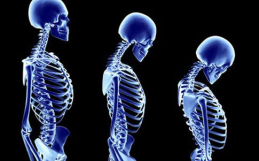This question is a bit tricky and like most complicated questions, the answer depends on a number of factors.
What are your goals? Do you have a family history of heart disease? Do you want to have the ability to perform a particular physical activity?
At the same time, this is an important question. Heart disease is very likely to take your life, as it is second only to cancer as the leading cause of death in Canada. Here are a few recommended exercises that can help improve the health of your heart — and the rest of your body:
1. Sit Less and Move More
 I will begin with non-exercise movement. It is now recognized as the most important for optimal health, so before you even devise your exercise program, begin by moving more throughout each day — at work, at school, and at home.
I will begin with non-exercise movement. It is now recognized as the most important for optimal health, so before you even devise your exercise program, begin by moving more throughout each day — at work, at school, and at home.
Sitting is the new smoking. James Levine, MD, PhD, a Mayo Clinic researcher suggests the average Westerner working in an office environment sits thirteen hours per day (at work and off work), sleeps for eight (my eyebrow is raised for this one if you review this), and moves for only three.
Prolonged sitting is a risk factor for all-cause mortality, independent of physical activity. Public health programs should focus on reducing sitting time in addition to increasing physical activity levels. Review this article.
2. Avoid Chronic Cardio & Active Couch Potato Syndrome
What do you consider cardio? According to Mark Sisson, author of Primal Endurance, explains that:
‘Chronic cardio’ is overly stressful chronic training making you fat, tired, and unhealthy with elevated risk factors from a predominantly sedentary lifestyle.
When workout routines exceed comfortable intensity and reach medium to difficult intensity, it becomes too difficult to optimize aerobic development. Workouts get too long in duration, and they are conducted too frequently, with insufficient rest and recovery before the next dose of chronic stress.
 This pattern is often paired with ‘active couch potato syndrome’, where cumulative fatigue from incessant heavy training makes you lazy and sluggish in between workouts. Also, especially in the endurance community, there is very little variety in movement, since the same movement pattern is repeated. This will create issues in posture, musculoskeletal RSI (repetitive strain injuries), and potential cardiovascular injury. Trust me, I know — this was me for 10+ years!
This pattern is often paired with ‘active couch potato syndrome’, where cumulative fatigue from incessant heavy training makes you lazy and sluggish in between workouts. Also, especially in the endurance community, there is very little variety in movement, since the same movement pattern is repeated. This will create issues in posture, musculoskeletal RSI (repetitive strain injuries), and potential cardiovascular injury. Trust me, I know — this was me for 10+ years!
Cardiovascular fitness is not the same as cardiovascular health. Katy Bowman’s Move Your DNA explains “cardiovascular health comes when the entire circulatory system is used in a variety of ways, to deliver oxygen to 100 percent of all cells of the body”. Cardiovascular fitness may allow a runner to maintain a very high heart rate, pumping blood primarily to the legs for 1-2 hours, multiple days per week — but provide poor blood supply to the rest of the body.
Dr Peter Attia, physician, endurance athlete and blogger, explains how heavy training actually damages your heart.
When we engage in all-out time trials, we increase the amount pumped out per beat. By stretching the heart it gets larger, pumping three to five litres at rest to thirty litres per minute during very intense exercise. Unfortunately, the right side of the heart is far less muscular and is more vulnerable to damage from chronic amounts of high cardiac output training. ‘Chronic cardio’ can lead to scarring in those susceptible and, without sufficient recovery, scarring can lead to cardiac arrhythmias, especially atrial fibrillation and even sudden death in those with no evidence of atherosclerosis.
Dr James O’Keefe’s TED talk “Run For Your Life” reviews the ‘excessive endurance hypothesis’. O’Keefe, a sports cardiologist, reviews how seasoned marathon runners displaying good bodyweight and blood profiles show increased scarring, thickening, and calcification on the arterial walls from chronic inflammation.
Their heart and cardiovascular system is aging at an accelerated rate. His point is clear that damage is not by vigorous exercise, but by chronically excessive vigorous exercise. He also recommends specific running recommendation of two to five days per week (for a total of ten to fifteen miles) at a ten minute per mile pace, is ideal for bulletproof cardiovascular health.
3. Walk and Do HIIT (High Intensity Interval Training)
 The general consensus seems to be that 3-5 hours per week of exercise is best for maintaining health and preventing heart disease. One third of your exercise should be anaerobic, with high perceived exertion, short duration high intensity (HIIT). The other two thirds should be aerobic, at a moderate perceived exertion, with a warm body, an increase in breath rate, but still allowing you to carry conversation.
The general consensus seems to be that 3-5 hours per week of exercise is best for maintaining health and preventing heart disease. One third of your exercise should be anaerobic, with high perceived exertion, short duration high intensity (HIIT). The other two thirds should be aerobic, at a moderate perceived exertion, with a warm body, an increase in breath rate, but still allowing you to carry conversation.
Measuring what dictates a ‘good’ heart is more difficult to test than what prevents heart disease or mortality related to heart disease. Although research has shown that once you reach 40 to 50 minutes of daily vigorous exercise, or just over an hour of moderate exercise (such as walking), the benefits from your efforts plateau. After this exercise, further efforts will not convey additional improvements to your life expectancy, specifically death from cancer or heart disease.
Prospective data indicates that brisk walking and vigorous exercise are associated with substantial and similar reductions in the incidence of coronary events among women.
4. Vary Your Movements
Humans have genetic requirements for varied movement. Increasing general, everyday movement will help prevent musculoskeletal, hormonal, metabolic and cognitive problems, while also improving your overall health and athletic performance. If you want to dig deeper, read Frank Booth’s paper, “Exercise and gene expression: physiological regulation of the human genome through physical activity”.
Try yoga, pilates, spin class, skipping, swimming, kettlebells, push-ups, pull ups, squats, dancing, playing tag with your kids, and walk everywhere. I personally enjoy crossfit.
The combination of full body movements (push, pull, squat, gymnastics, skipping, etc), working with a group (we are pack animals) and sense of accomplishment of working hard (HIIT) are what make crossfit a fun activity to include as a lifestyle choice. I also understand the inherent risks of pairing speed with skilled movement, so I caution everyone to work closely and patiently with their trainer/coach if they choose crossfit.
Other Options for Improving Heart Health
Besides exercise, what are the top things that will improve one’s heart health?
- Use box breathing and meditation to promote happiness, improving your parasympathetic system and reducing your sympathetic flight or fight reaction.
- Have fun and play, by spending time with your kids, family, or friends
- Eat real food and become fat-adapted by consuming less carbohydrates, moderating protein and including more healthy fats
- Sleep 8 hours every night, making sure to decrease blue light/screen time in the evening.
- Dr. Rhonda Patrick explains real cause of heart disease
Keep moving.













